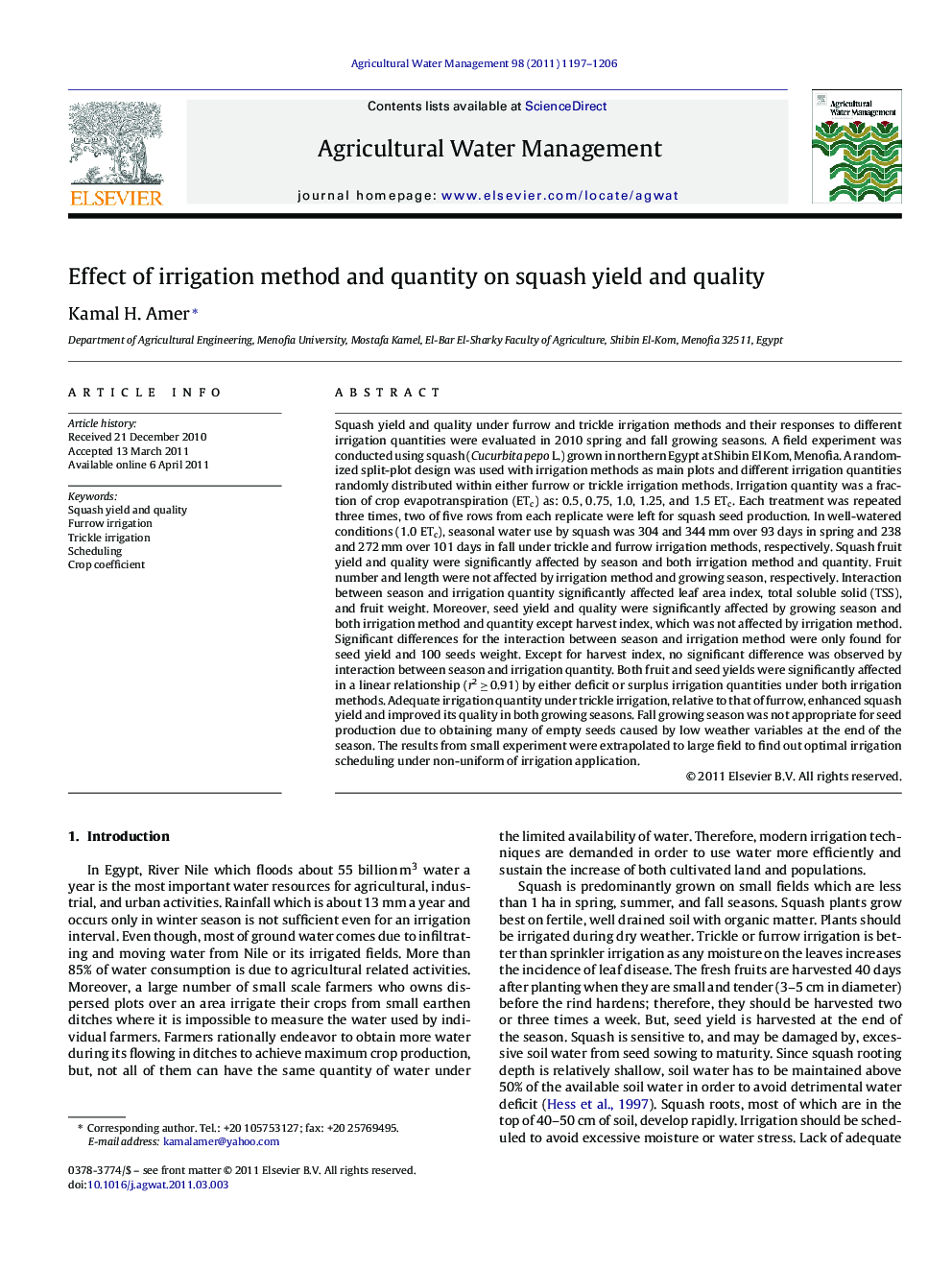| Article ID | Journal | Published Year | Pages | File Type |
|---|---|---|---|---|
| 4479479 | Agricultural Water Management | 2011 | 10 Pages |
Squash yield and quality under furrow and trickle irrigation methods and their responses to different irrigation quantities were evaluated in 2010 spring and fall growing seasons. A field experiment was conducted using squash (Cucurbita pepo L.) grown in northern Egypt at Shibin El Kom, Menofia. A randomized split-plot design was used with irrigation methods as main plots and different irrigation quantities randomly distributed within either furrow or trickle irrigation methods. Irrigation quantity was a fraction of crop evapotranspiration (ETc) as: 0.5, 0.75, 1.0, 1.25, and 1.5 ETc. Each treatment was repeated three times, two of five rows from each replicate were left for squash seed production. In well-watered conditions (1.0 ETc), seasonal water use by squash was 304 and 344 mm over 93 days in spring and 238 and 272 mm over 101 days in fall under trickle and furrow irrigation methods, respectively. Squash fruit yield and quality were significantly affected by season and both irrigation method and quantity. Fruit number and length were not affected by irrigation method and growing season, respectively. Interaction between season and irrigation quantity significantly affected leaf area index, total soluble solid (TSS), and fruit weight. Moreover, seed yield and quality were significantly affected by growing season and both irrigation method and quantity except harvest index, which was not affected by irrigation method. Significant differences for the interaction between season and irrigation method were only found for seed yield and 100 seeds weight. Except for harvest index, no significant difference was observed by interaction between season and irrigation quantity. Both fruit and seed yields were significantly affected in a linear relationship (r2 ≥ 0.91) by either deficit or surplus irrigation quantities under both irrigation methods. Adequate irrigation quantity under trickle irrigation, relative to that of furrow, enhanced squash yield and improved its quality in both growing seasons. Fall growing season was not appropriate for seed production due to obtaining many of empty seeds caused by low weather variables at the end of the season. The results from small experiment were extrapolated to large field to find out optimal irrigation scheduling under non-uniform of irrigation application.
